Gabriel Prosser (1776 – October 10, 1800) born into #slavery at Brookfield, a tobacco plantation in Henrico County, Virginia, was a enslaved blacksmith who planned the largest slave rebellion in the Richmond area in the summer of 1800.
Gabriel had two brothers, Solomon and Martin. They were all held by Thomas Prosser, the owner. As Gabriel and Solomon were trained as blacksmiths, their father may have also had that skill. Gabriel was also taught to read and write. By the mid-1790s, Gabriel was intelligent with a large physique, and by the age of 20 he was six feet, two or three inches tall, and was enormously strong from his years of smithing. Even older #black slaves saw him as a leader. His long and “bony face, well made,: was marred by the loss of his two front teeth and “two or three scars on his head.” White people as well as blacks regarded the literate young man as “a fellow of great courage and intellect above his rank in life.”
Thomas Prosser died in 1798, and his son Thomas Henry Prosser, at the age of 22, became the new master of the Brookfield Plantation. Thomas Henry was a cruel and economically ambitious master, and it is likely that he pushed his slaves too hard. He also hired out some of his skilled slaves, including Gabriel and Solomon, a practice that was common in Virginia at the time — and one that allowed slaves more freedom than some Virginians were comfortable with. Although the state legislature made laws attempting to curtail hiring out, they were not enforced, largely because local merchants and artisans relied heavily on the cheap labor that they could get from hiring slaves, as opposed to white tradesmen.
Thomas Henry allowed Gabriel to hire himself out to masters in and around Richmond, giving him access to a certain amount of freedom, as well as money. Gabriel also met fellow hired slaves, free blacks, and white laborers, with whom he shared work and leisure time.
Many free blacks, though they faced overwhelming discrimination, managed to prosper as small business owners in the Richmond economy. Even more threatening to city authorities were the bonds that were formed among slaves, free blacks and working class whites, who worked and socialized together, especially in a city in which whites, and especially wealthy whites, were in the minority. Laws were passed curtailing socializing between slaves and free blacks, and interracial grog shops were raided.
Gabriel experienced several strong influences: the rhetoric of the American Revolution; the uprising in Saint Domingue, the radical words of white artisans who championed the working class; the success exhibited by free blacks; his own hatred of the merchants who routinely cheated the slaves they hired; his desire to be free and to prosper. He was moving toward a revolutionary stance that Solomon described in his court confession: “My brother Gabriel was the person who influenced me to join him and others in order that (as he said) we might conquer the white people and possess ourselves of their property.”
In September of 1799, Gabriel, Solomon, and a fellow slave named Jupiter stole a pig. When caught by white overseer Absalom Johnson, Gabriel wrestled him to the ground and bit off most of his ear. In court, he was found guilty of maiming a white man, a capital offense. However, Gabriel escaped execution through a loophole called “benefit of clergy,” which allowed him to choose public branding over execution if he could recite a verse from the Bible. Gabriel recited his verse, and then was branded in his left hand in open court. The branding, as well as the month he spent in jail, was the last in a long chain of offenses that pushed him toward open rebellion.
Inspired by Saint Domingue and spurred on by working-class talk of a truly egalitarian society, Gabriel decided it was time to act. He believed that if the slaves rose and fought for their rights, the poor white people would join them. His plan involved seizing Capitol Square in Richmond, and taking Governor James Monroe as a hostage in order to bargain with city authorities. According to later testimony, one of the conspirators also “was to go to the nation of Indians called Catawbas to persuade them to join the negroes to fight the white people.” It was also believed that a French “army was landed at South Key, which they hoped would assist them.” Their banner would bear the motto “Death or Liberty,” the battle cry of Saint Domingue. Gabriel planned the revolt during the spring and summer of 1800.
On August 30, 1800, Gabriel intended to lead slaves into Richmond, but the rebellion was postponed because of rain. The slaves’ owners had suspicion of the uprising, and two slaves told their owner, Mosby Sheppard, about the plans. He warned Virginia’s Governor, James Monroe, who called out the state militia. Gabriel escaped downriver to Norfolk, but he was spotted and betrayed there by another slave for the reward offered by the state. That slave did not receive the full reward. Gabriel was returned to Richmond for questioning, but he did not submit. Gabriel, his two brothers, and 23 other slaves were hanged.
In 2002, the City of Richmond adopted a resolution to commemorate the 202nd anniversary “of the execution of the patriot and freedom fighter, Gabriel, whose death stands as a symbol for the determination and struggle of slaves to obtain freedom, justice and equality as promised by the fundamental principles of democratic governments of the Commonwealth of Virginia and the United States of America.”
On August 30, 2007, Governor Tim Kaine informally pardoned Gabriel and his co-conspirators.
www.infoplease.com/ipa/A0878497.html
http://www.aaregistry.org/historic_events/view/freedom-fighter-gabriel-prosser-had-vision






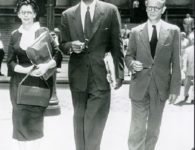
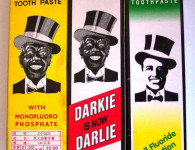
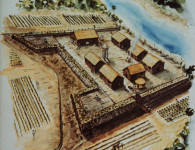

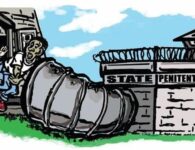

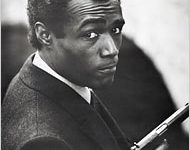
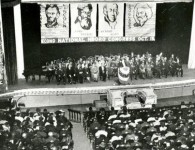
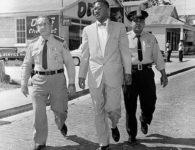
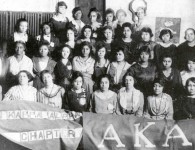
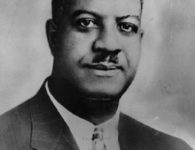
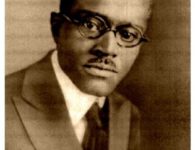
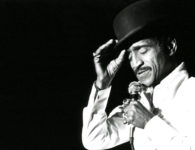
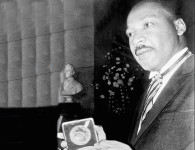

No comments